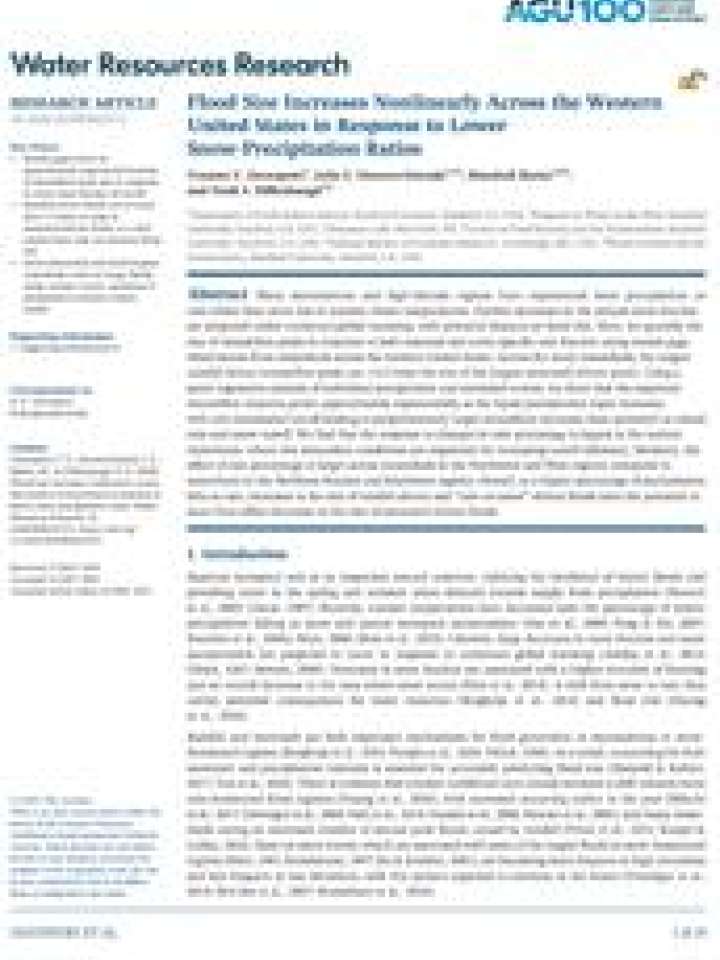Flood size increases nonlinearly across the Western United States in response to lower snow‐precipitation ratios
Many mountainous and high‐latitude regions have experienced more precipitation as rain rather than snow due to warmer winter temperatures. Further decreases in the annual snow fraction are projected under continued global warming, with potential impacts on flood risk. Here, the paper quantifies the size of streamflow peaks in response to both seasonal and event‐specific rain‐fraction using stream gage observations from watersheds across the western United States. Across the study watersheds, the largest rainfall‐driven streamflow peaks are >2.5 times the size of the largest snowmelt‐driven peaks. Using a panel regression analysis of individual precipitation and snowmelt events, the study shows that the empirical streamflow response grows approximately exponentially as the liquid precipitation input increases, with rain‐dominated runoff leading to proportionately larger streamflow increases than snowmelt or mixed rain‐and‐snow runoff. It was found that the response to changes in rain percentage is largest in the wettest watersheds, where wet antecedent conditions are important for increasing runoff efficiency. Similarly, the effect of rain percentage is larger across watersheds in the Northwest and West regions compared to watersheds in the Northern Rockies and Southwest regions. Overall, as a higher percentage of precipitation falls as rain, increases in the size of rainfall‐driven and “rain‐on‐snow”‐driven floods have the potential to more than offset decreases in the size of snowmelt‐driven floods.
Explore further
